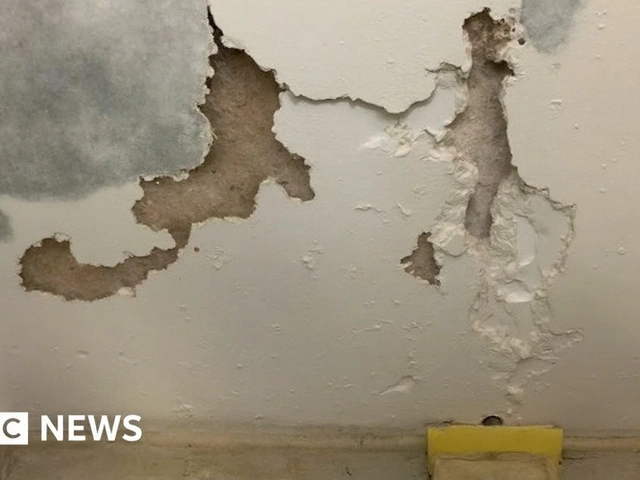33,295 pages land online — and most of it you’ve seen before
Thirty-three thousand, two hundred and ninety-five pages. That’s the size of the document cache the House Oversight Committee just posted from the Department of Justice’s production in the Jeffrey Epstein matter. It sounds massive, and it is. But here’s the rub: much of the material is either duplicative or already public — the kind of thing court-watchers and reporters have had for years. If you were hoping for a secret ledger or a hidden “client list,” this release won’t deliver that. The Justice Department and FBI said in July they found no evidence such a list exists, and nothing in these Epstein files changes that.
What’s actually in the dump? A lot of paperwork you’d expect in a high-profile case that spanned decades, multiple jurisdictions, and overlapping civil and criminal proceedings. The bulk includes federal court filings, transcripts from Ghislaine Maxwell’s trial, previously released flight logs, and email traffic and reports tied to Epstein’s final hours in federal custody in 2019.
Democrats called the rollout performative. Representative Robert Garcia of California said the files were “mostly public information” and warned readers not to mistake volume for new facts. Republicans on the committee argue they’re making good on a pledge to put government records in front of the public, even if those records don’t break new ground.
The release arrives amid a familiar swirl of online rumor and political heat. Last month’s decision by the Trump camp to signal no more releases fueled backlash from some of the former president’s supporters, who have long pushed the idea that government agencies are hiding explosive names. But the Justice Department and FBI, after reviewing relevant holdings, said they found no proof of a curated client list — and stressed that the presence of any person’s name in civil records or on a flight log is not evidence of criminal conduct.
The 33,295 pages posted by the House are only a slice of the records DOJ still holds. Agencies rarely turn over everything in one go. Some materials are protected by privacy laws, grand jury rules, or active investigative restrictions. Others are covered by court orders, especially in cases involving victims of sexual abuse.
What the files show — and what they don’t
Read through the cache and a pattern emerges: it’s a formal, administrative record more than a trove of new revelations. Here are the main buckets in plain language:
- Maxwell trial transcripts: Day-by-day accounts of testimony, exhibits, and rulings that led to her 2021 conviction and 20-year sentence. These transcripts have circulated widely since the verdict and sentencing.
- Flight logs: Manifests and notes from trips on Epstein’s aircraft. These logs have been public in various forms for years. They record who flew and when, not why they traveled or what they did.
- Bureau of Prisons communications: Emails, incident reports, and logs tied to the night Epstein died at the Metropolitan Correctional Center in Manhattan. Many of these details appeared in DOJ Inspector General findings and prior court filings.
- Florida case files: Motions, orders, and correspondence from the years surrounding the 2008 non-prosecution agreement that shielded Epstein from broader federal charges in exchange for a plea in state court.
That Florida chapter remains one of the most disputed pieces of the story. In 2008, then–U.S. Attorney Alexander Acosta approved a deal that victims were not properly told about at the time. A federal judge later ruled the government violated the Crime Victims’ Rights Act by keeping them in the dark, though the court stopped short of undoing the agreement. The new House cache doesn’t alter that history; it mostly preserves it in one place.
On Epstein’s death, the materials reinforce what previous investigations found: the Manhattan jail was understaffed, important checks weren’t done, and cameras didn’t capture crucial angles. Two officers were charged with falsifying records about their rounds; prosecutors later dismissed the case after they completed community service and complied with a deferred prosecution deal. The Justice Department’s inspector general chronicled a litany of failures at the facility, which closed in 2021 amid broader safety concerns.
If you’re looking for smoking-gun documents that name public figures and describe crimes, this isn’t that. Names do appear — in depositions, travel records, and correspondence — but context matters. Their inclusion in public filings doesn’t equate to wrongdoing, and courts have repeatedly noted that civil exhibits can sweep in people tangentially, or not at all involved in any alleged abuse. That’s why victim privacy, redactions, and protective orders run through so much of the paperwork.
The politics around the release are impossible to miss. Oversight Chair James Comer has pressed agencies for months for more Epstein-related material as part of a broader push for transparency across federal investigations. Democrats argue the committee is recycling public records to stoke outrage without adding facts. Both sides, however, know the case still draws intense attention, and that attention often outruns what the files really say.
There’s also the matter of what remains behind the curtain. Grand jury material is locked down by Rule 6(e) of the Federal Rules of Criminal Procedure. Victim identities and sensitive medical or personal information fall under the Crime Victims’ Rights Act. Ongoing investigative leads — if any exist — would be redacted under standard DOJ practice. Those constraints mean that even large productions will carry heavy black bars and long stretches of boilerplate text.
For readers trying to make sense of a 33,000-page mountain, a few practical notes help. First, size doesn’t equal substance. Agencies often include publicly available documents in a production so the record is complete and consistent, down to the exact page numbers and stamps used in court. Second, many pages are near-duplicates: versions of the same filing with different date stamps, scans, or attachments. Third, context sits outside the PDFs. Key decisions — why a plea deal happened, why a facility was understaffed, why an investigative lead didn’t pan out — live in memos and interviews that are often the last things to be cleared for release, if ever.
The lawsuit trail since Epstein’s death adds more texture than the new cache. Ghislaine Maxwell’s conviction anchored the criminal narrative that federal prosecutors in New York built on victim testimony and corroborating records. In civil court, victims have won settlements from institutions accused of enabling Epstein, including major banks that resolved claims for hundreds of millions of dollars without admitting wrongdoing. The Epstein estate itself has paid out through a victim compensation program and separate agreements, including with the U.S. Virgin Islands, where his private island was located.
Meanwhile, waves of civil filings have been unsealed in recent years, exposing private communications and naming dozens of individuals. Judges have repeatedly cautioned that appearing in those documents does not imply criminal liability. Those cautions tend to get lost once names hit social media, which is one reason agencies cite when they move slowly on broad public releases.
What happens next on Capitol Hill? The committee can keep pressing DOJ for more, but the legal fences aren’t moving: privacy statutes, court orders, and grand jury secrecy still apply. Short of a court changing those limits — which is rare — lawmakers are likely to get more of the same: big batches, many redactions, lots of already-public material stitched together.
Outside Congress, the investigative landscape is narrower now than it was in 2019. Epstein is dead. Maxwell is in federal prison. Any remaining criminal exposure for others would depend on evidence prosecutors can actually take to court. That threshold is far higher than the one for releasing documents, which is why the paper fog is so thick and the criminal docket so thin.
The public appetite for answers isn’t going away, and neither is the pressure on institutions to show their work. But transparency has limits by design in cases involving sexual abuse, confidential witnesses, and grand jury material. This new release underscores that reality. It gathers more of the story into one place, yet shifts very little about what we know — or can know — from the public record.
So if you’re opening the files today, expect a clearer view of the scaffolding around a case that stunned the country: how the courts handled Maxwell, how the Bureau of Prisons documented a night it can’t repair, and how a 2008 deal still casts a long shadow. Don’t expect the parts the law keeps sealed, or the blockbuster revelations that viral posts keep promising. Those aren’t in this batch, and they may never be in any batch.





